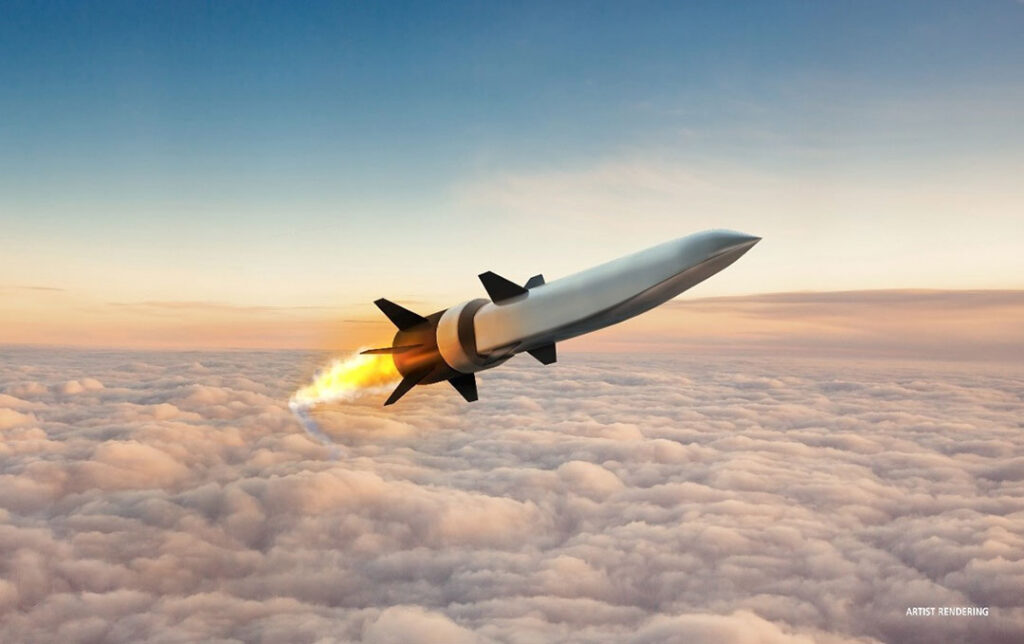THE WATCH STAFF
The speed and maneuverability of hypersonic missiles like those being developed by Russia and the People’s Republic of China make them an unprecedented threat to the U.S. homeland.
At least, that’s been the consensus.
But a new report from the Center for Strategic and International Studies (CSIS) says the United States military may be able to use the strength of the weapons — which travel at five times the speed of sound and greater — against them.
“It turns out, every feature that makes hypersonic missiles attractive also comes with a cost,”
said Dr. Tom Karako, co-author with Masao Dahlgren of “Complex Air Defense: Countering the Hypersonic Missile Threat,” during a February 7, 2022, online discussion hosted by CSIS. “They bring a different set of vulnerabilities for a defender to exploit.”
The journal Foreign Policy, in a February 7 story, described those vulnerabilities: “The stress of such speeds through turbulent air and 4,000-degree heat gives hypersonic weapons a higher risk of failure all while losing energy by making maneuvers during the flight.
The result, according to Foreign Policy, is a small margin of error.
Current missile defense systems lack the capabilities to effectively track and kill hypersonic weaponry, according to the Missile Defense Advocacy Alliance. Therefore, the CSIS paper offers some unique solutions on how to disrupt such a disruptive technology. The proposals go beyond reliance on a “single-purpose interceptor with an extremely agile kill vehicle” for missile defense and instead propose interceptors with “alternative payloads,” the report says.
One possibility is a “dust defense” in which “missiles or airborne platforms could dispense particulate matter to disrupt or destroy” hypersonic weapons. “At hypersonic velocities, missile impacts against atmospheric dust, rain, and other particles can deposit bullet-like kinetic energies, triggering unpredictable aerodynamic, thermal, and structural disruptions,” the report states.
Another proposal in the report is the use of high-power microwaves to hinder the performance of hypersonic glide vehicles or cause them catastrophic failure.
Foreign Policy summarized the report’s thesis succinctly: “Experts think that bumpy ride could give the U.S. Defense Department a better chance to shoot down Beijing and Moscow’s superweapons on the cheap.”
Karako said during the online discussion hosted by CSIS, a Washington, D.C., think tank, that media coverage of hypersonic weapons has occasionally lapsed into “breathless depictions” of their capabilities. “Notwithstanding all the hyperbole, hypersonic missiles are not unstoppable,” he told the Breaking Defense website on February 7.
The CSIS report comes in the wake of a February 3 meeting between high-ranking Pentagon officials and defense industry CEOs to discuss the state of the industrial base to support hypersonic offensive and defensive capabilities. On February 15, the Department of Defense issued a report that said it will strengthen oversight of industry mergers amid concerns that consolidation is hindering U.S. competitiveness.
Any new defensive weapons, such as those proposed in the CSIS report, will be integrated with the global satellite-defense system currently under development.
“The single most important capability here will be space sensors to track these threats, followed by a glide-phase interceptor [weapon] and a command-and-control function that can contend with a geographically broad, temporally compressed decision-space,” Karako told Breaking Defense.
“I guess the contention of this report,” Karako said during the CSIS discussion, “is that hypersonic defense is a difficult but, ultimately, tractable problem.”
IMAGE CREDIT: NORTHROP GRUMMAN

